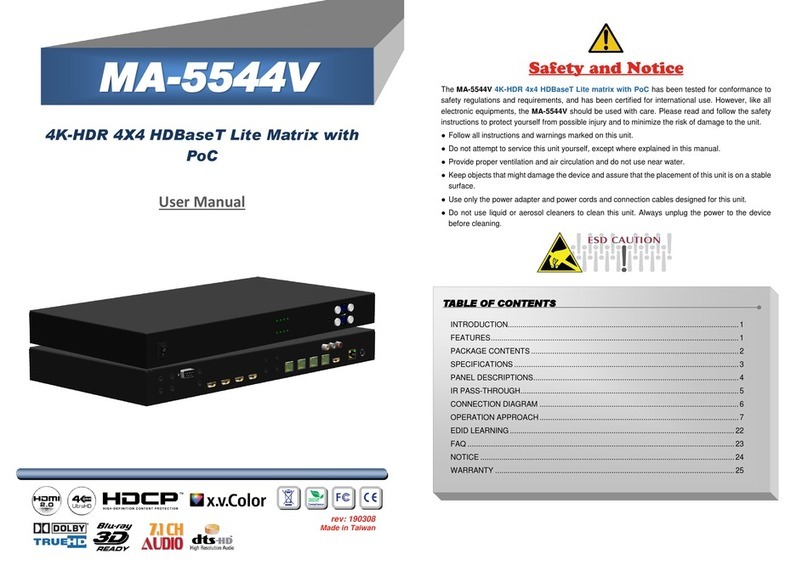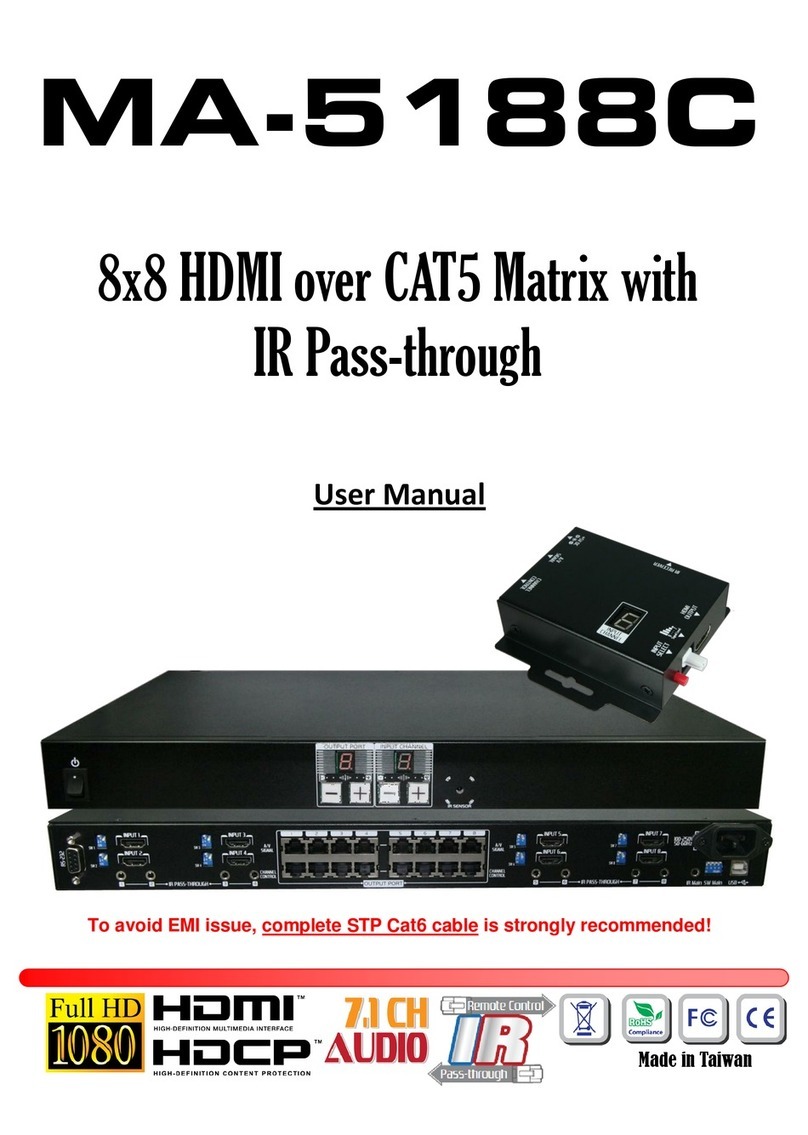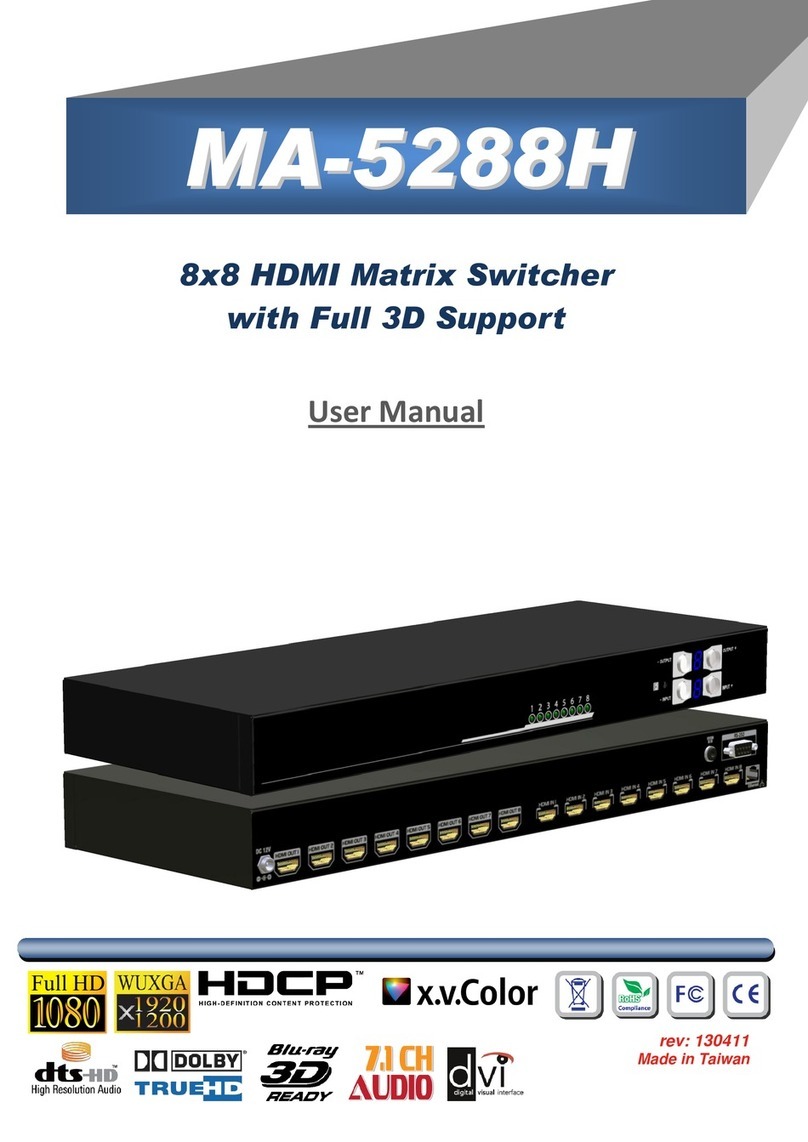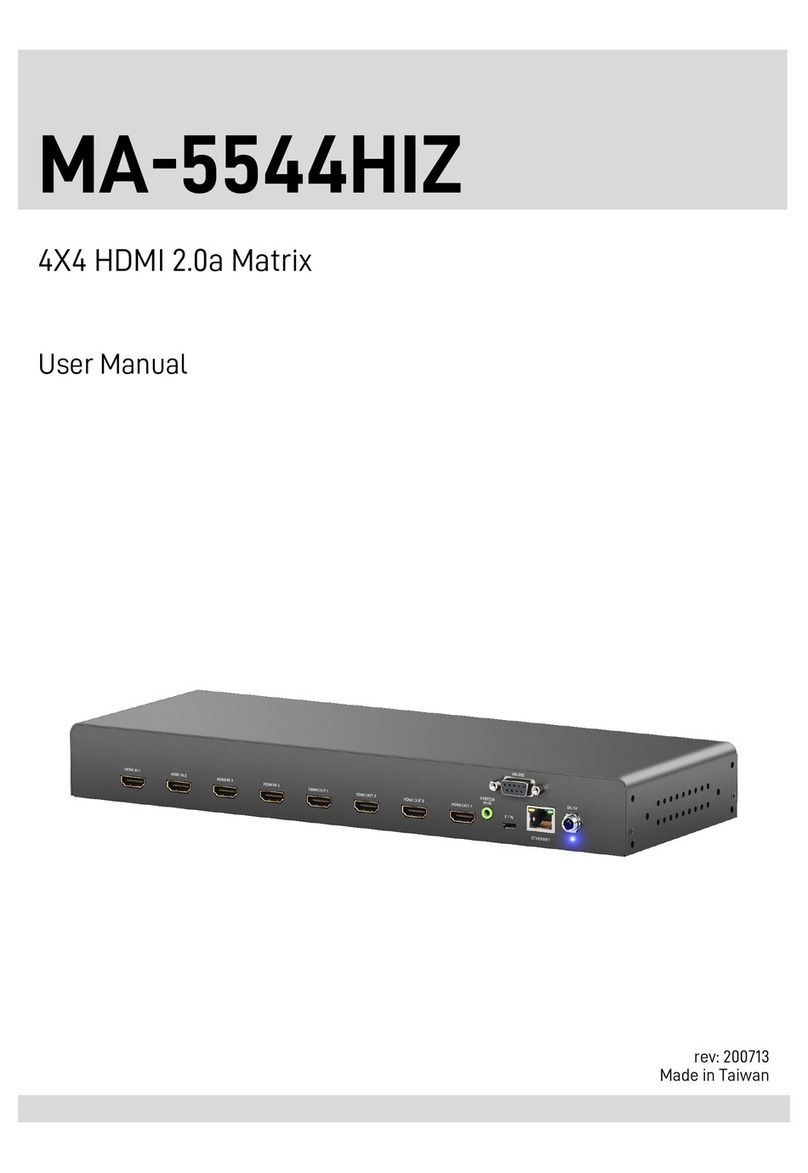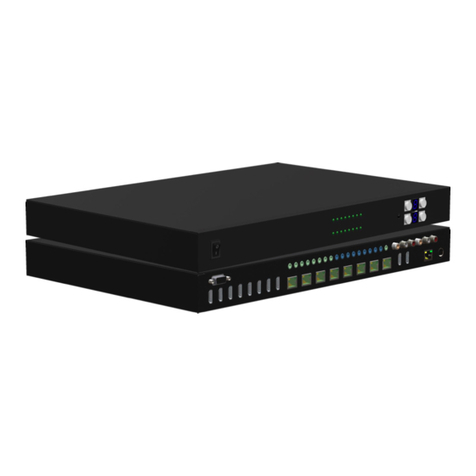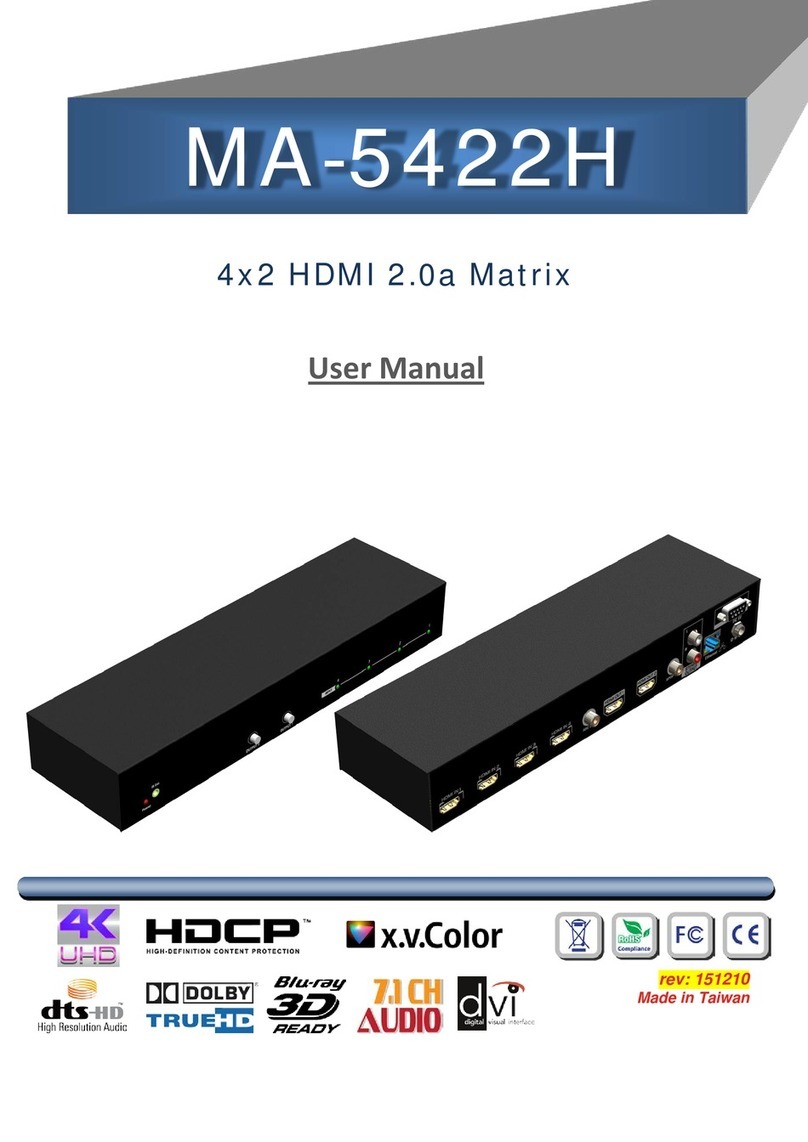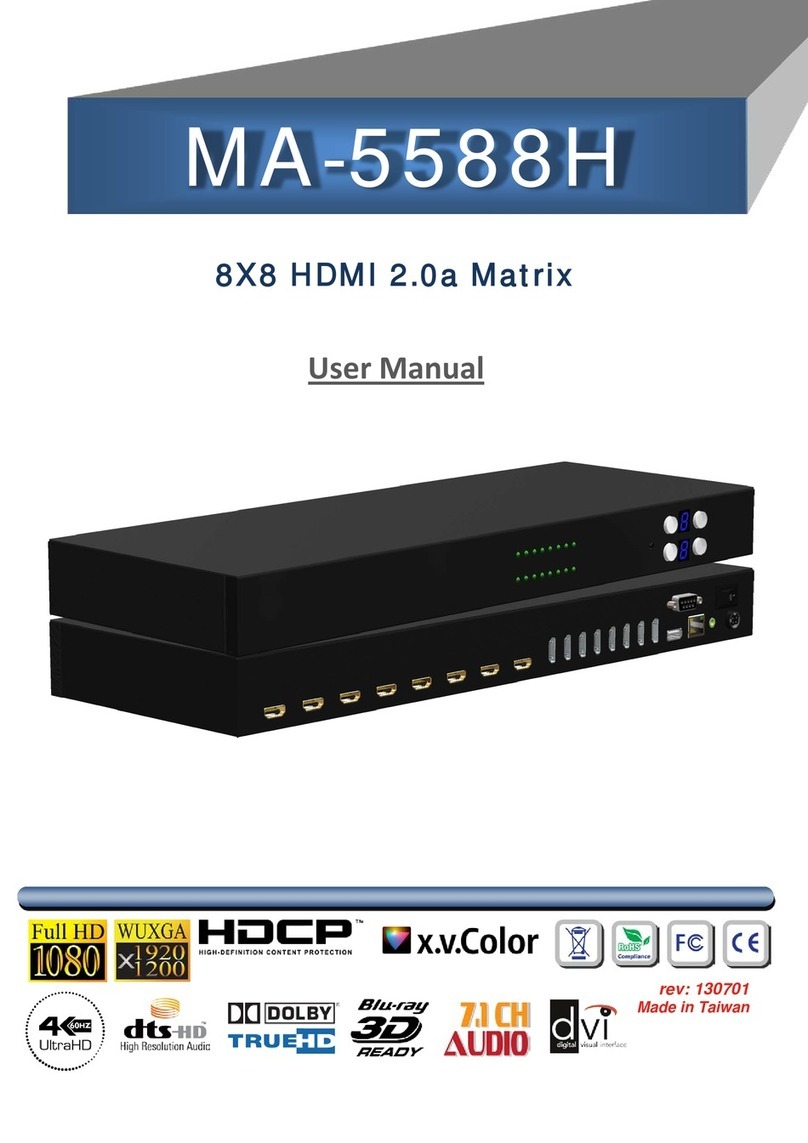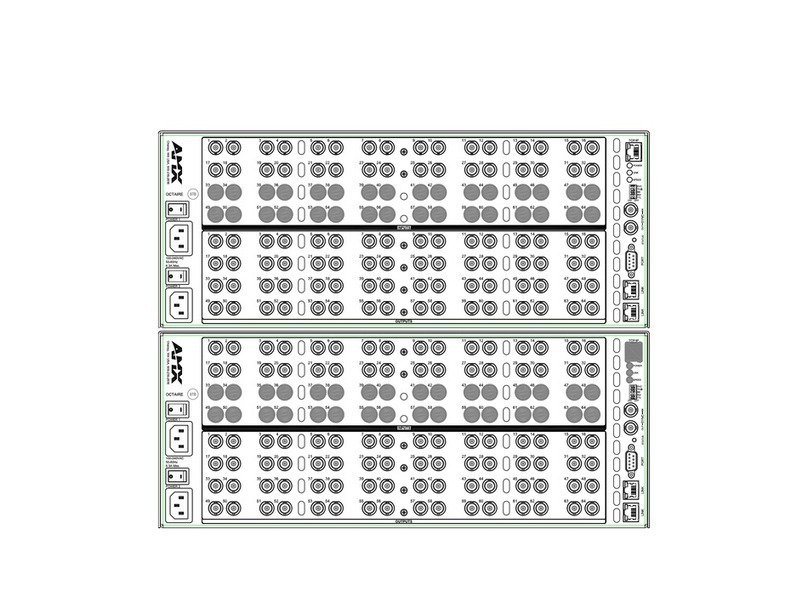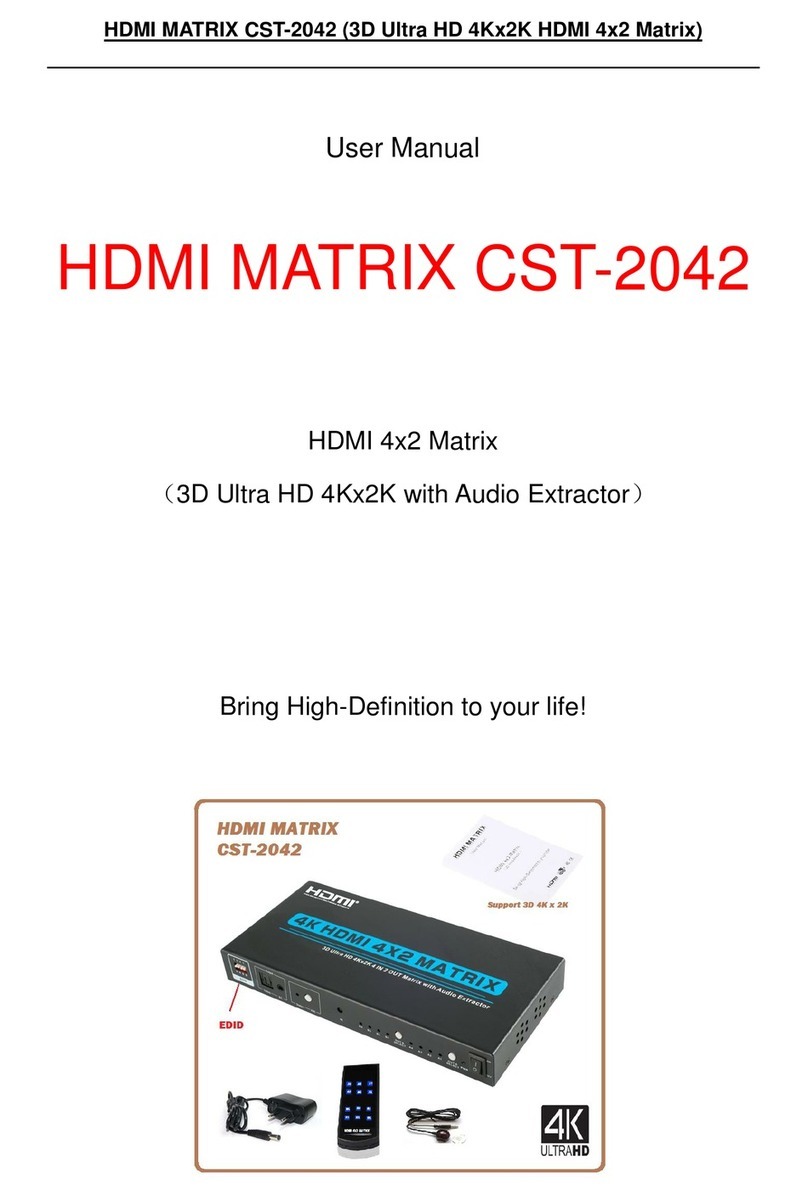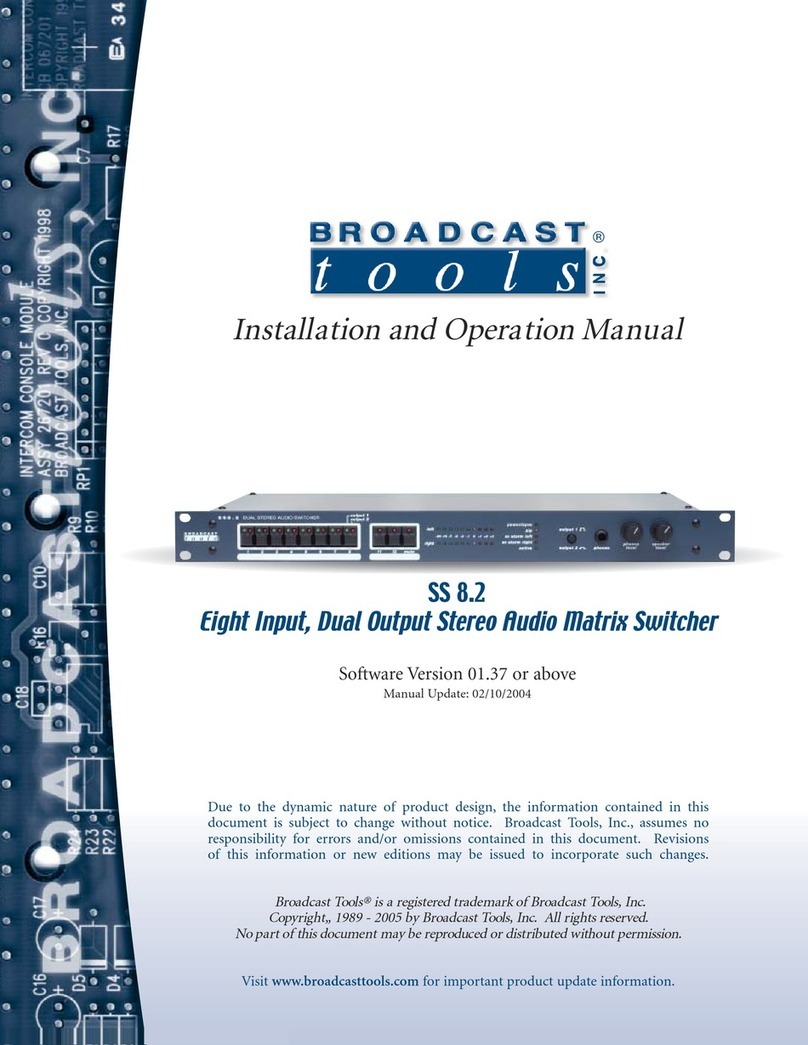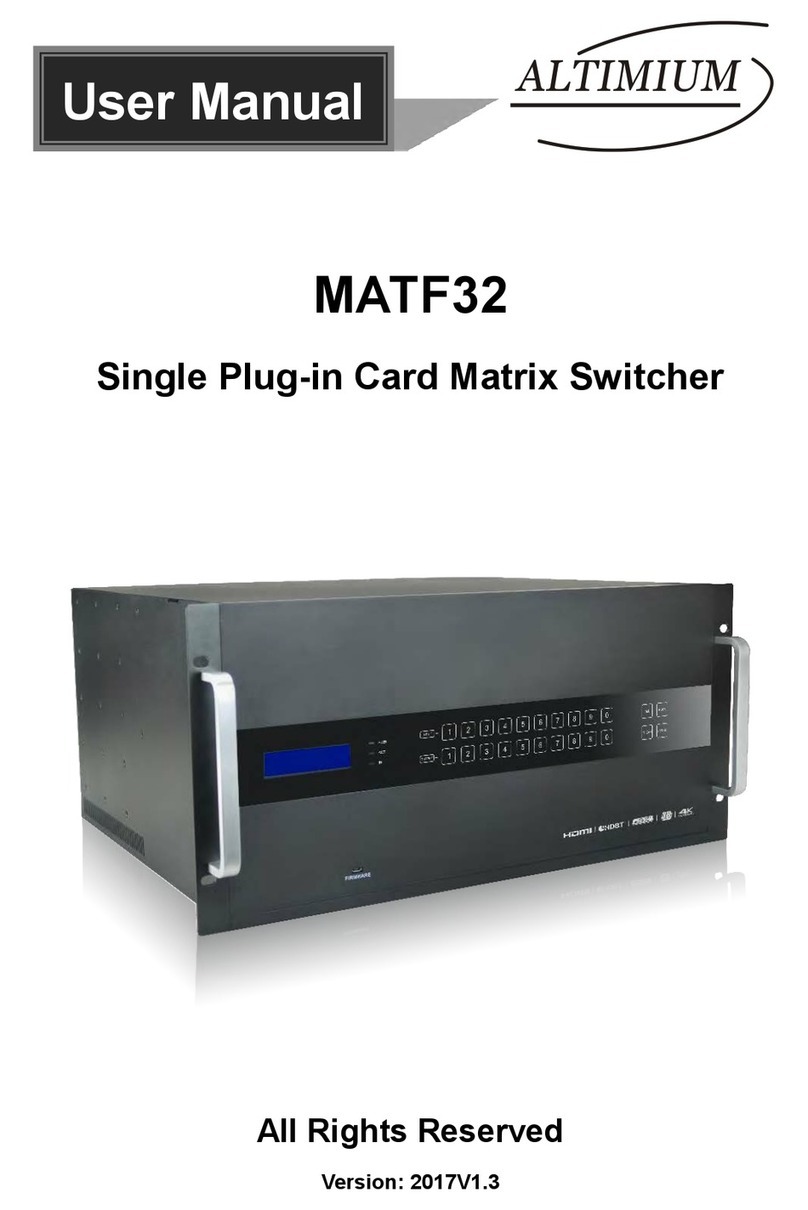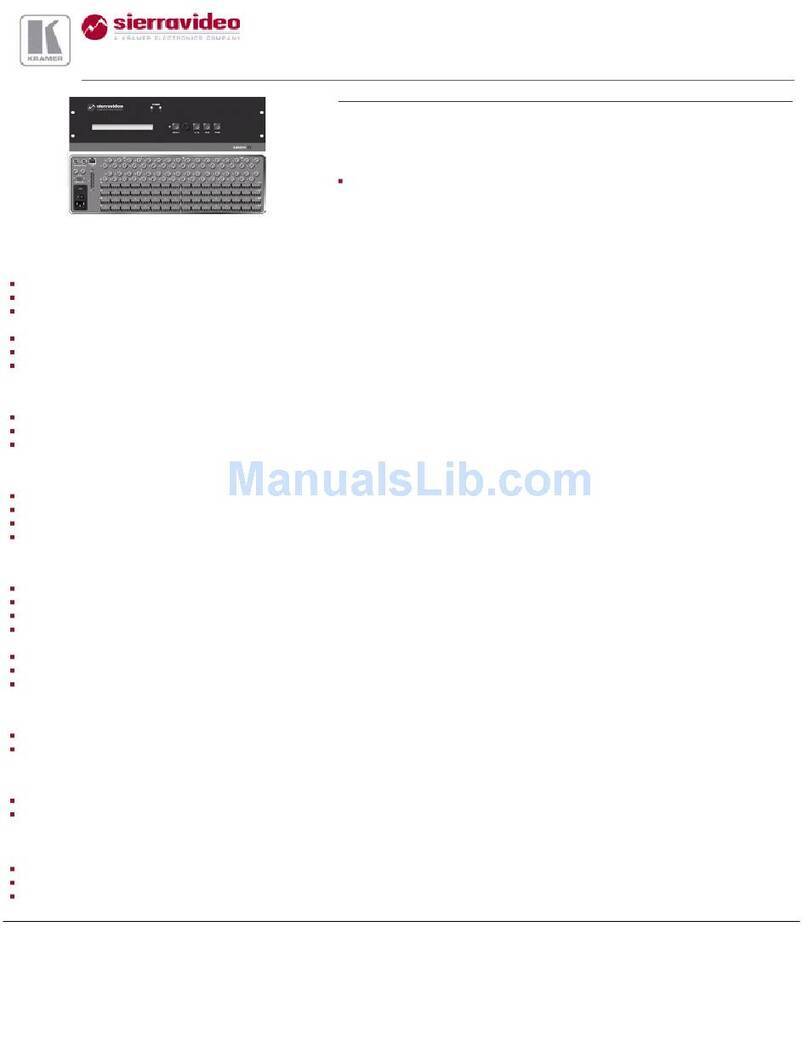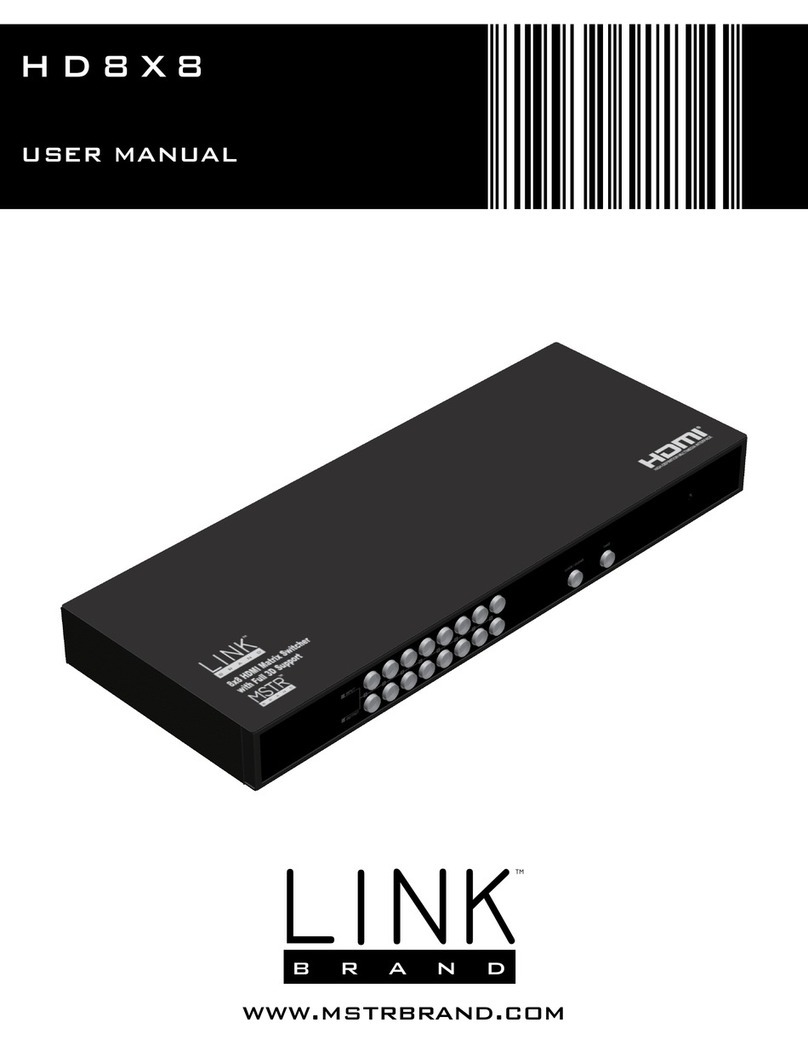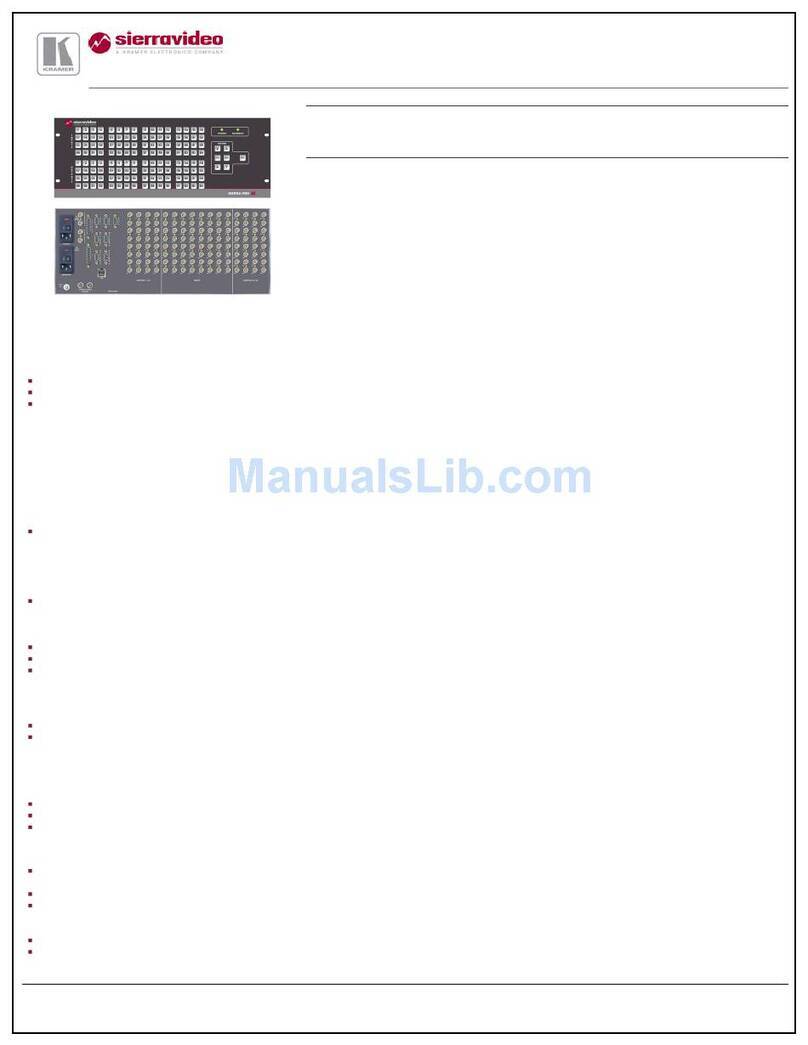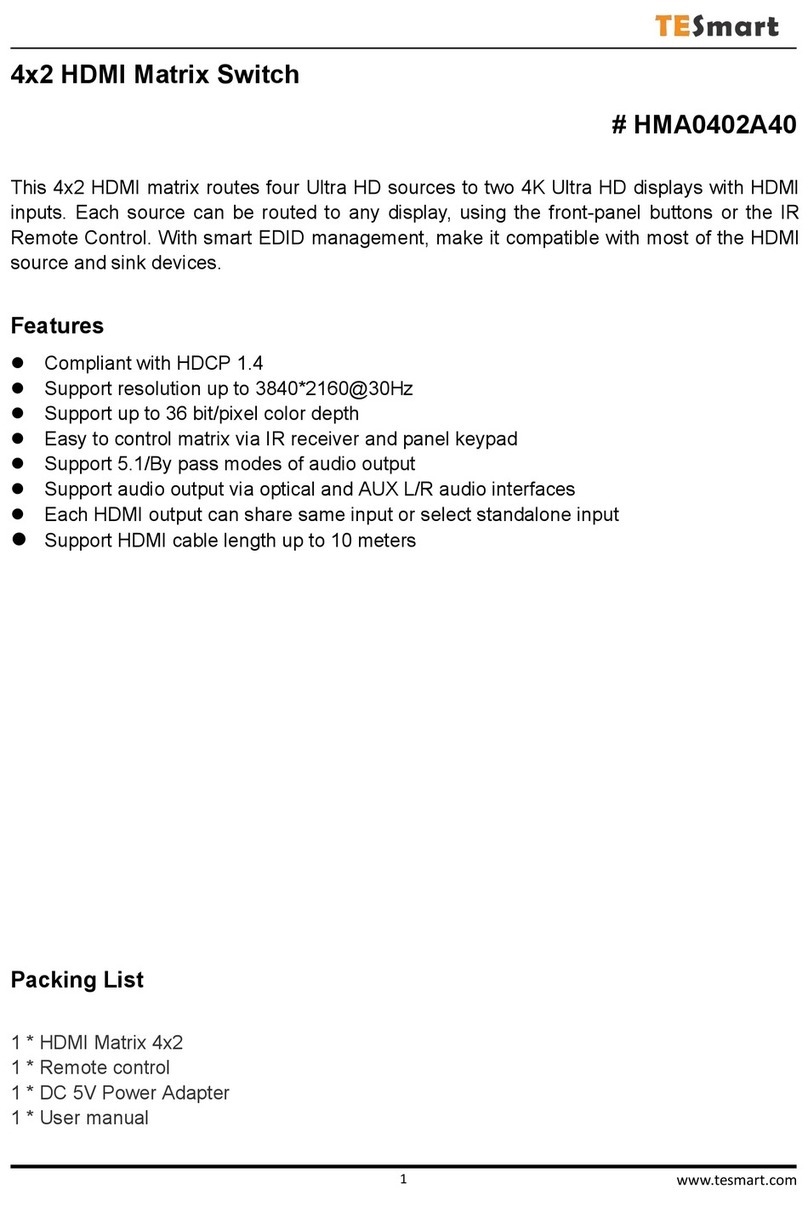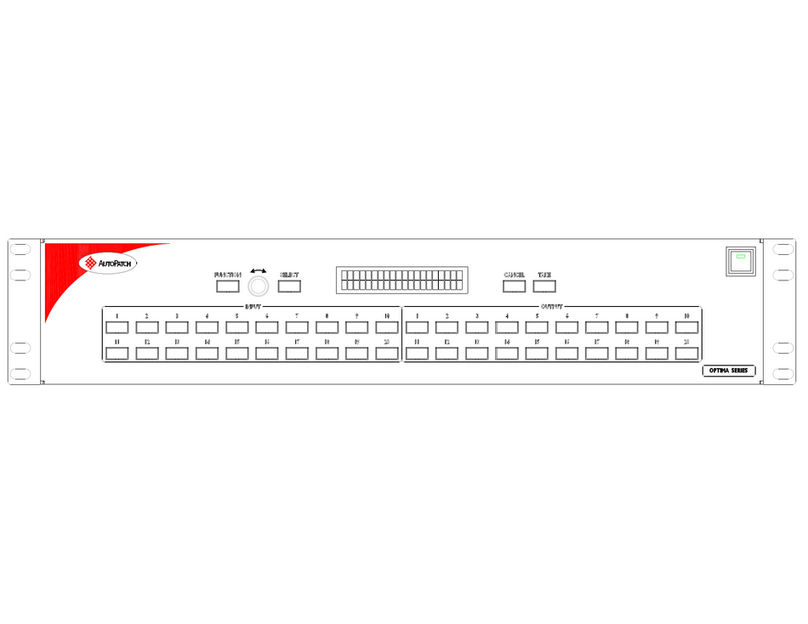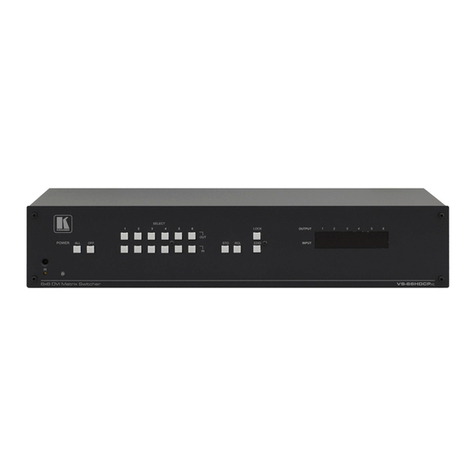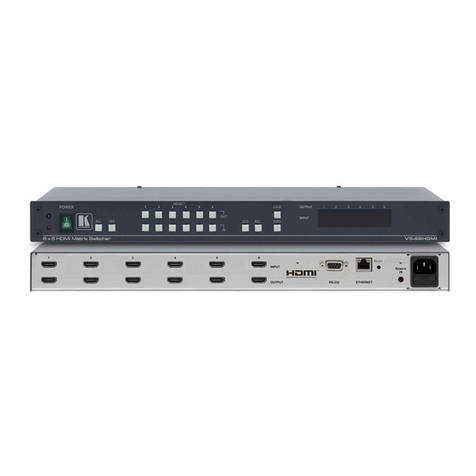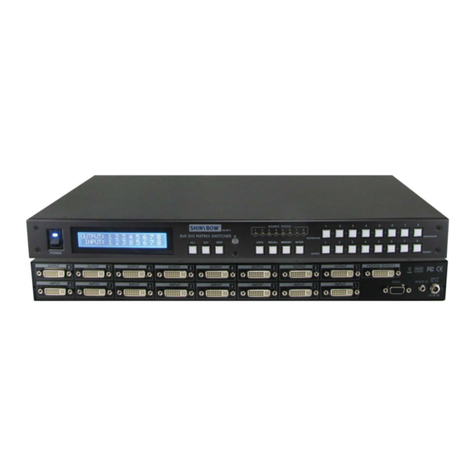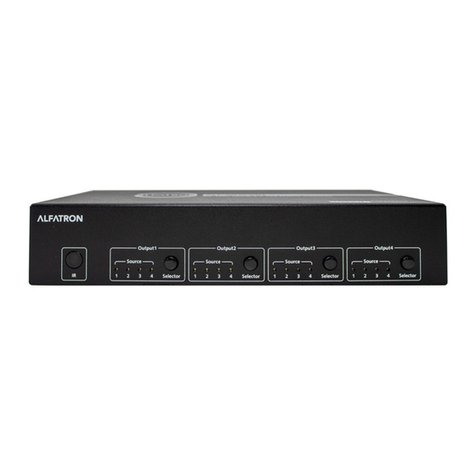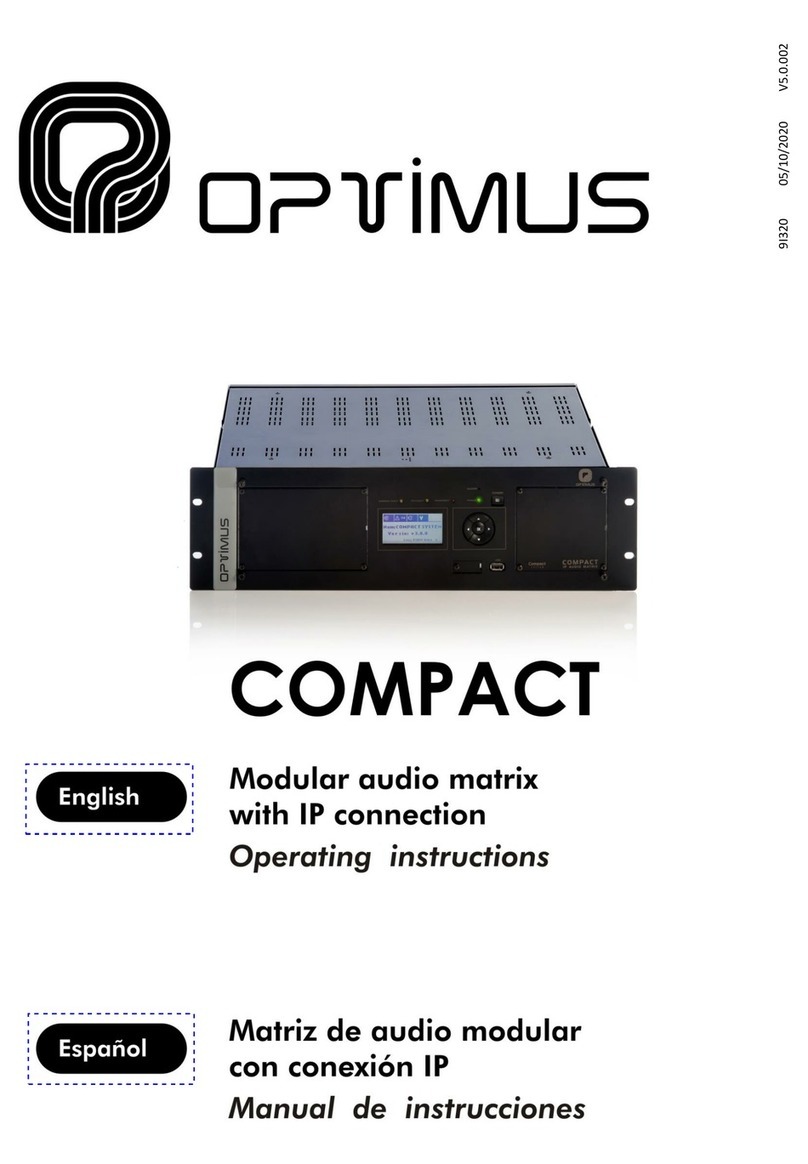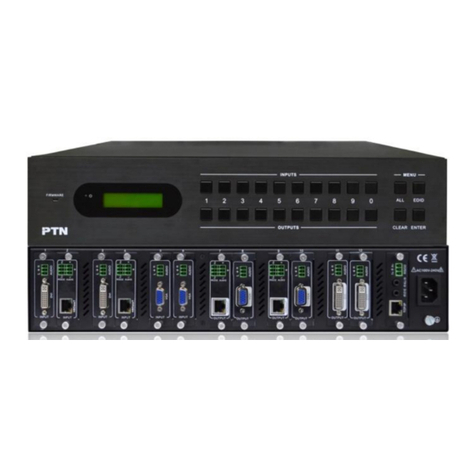INTRODUCTION
The MA-5488V2 8x8 HDBaseT Lite matrix with PoC, HDCP2.2 & 4K2K60 (YUV420) provides the most
flexible and cost effective solution in the market to route high definition video sources plus multi-channel
(up to 7.1-channel) digital audio from any of the eight HDMI sources to the remote displays at the same
time. Through only one low cost Cat-5/5e/6 LAN cables, not only high quality video and audio can be
transmitted to the display sites, but also users can switch among eight HDMI sources using the push
button, remote control or IP control. Furthermore, the built-in IR extension function makes users at display
site access the DVD player, PS3 or any HDMI supported devices directly! In addition, MA-5488V2 also
supports PoC (Power over Cable) which can power both units from TX with power supply.
FEATURES
●Supports HDMI Deep Color, full 3D, 4K2K@60Hz (YUV 4:2:0)
●Extends the HDMI transmission up to 70m (230ft) from the HDMI source at Full HD 1080p 48-bit, and
40m (130ft) at 4K2K@60Hz (YUV 4:2:0)
●Supports PoC(Power over Cable) which can power both units from TX side with power supply
●HDCP1.4 & HDCP2.2 compliant
●Bi-directional IR pass-though
●Allows controlling local HDMI sources or display through control path
●Allows controlling matrix switcher from IR remote
●Pure unaltered uncompressed 7.1ch digital HDMI over Cat.5/5e/6 cable transmission
●Allows any source to be displayed on multiple displays at the same time
●Allows any HDMI display to view any HDMI source at any time
●Supports 7.1 channel digital audio
●Supports default HDMI EDID and learns the EDID of displays to matrix switcher
●The matrix switcher can switch every output channels from any HDMI inputs by Push button, IR remote
control, RS-232, IP control and web-interface control
●Easy installation with rack-mounting
●Fast response time – 2~4 seconds for channel switch
ACKAGE CONTENTS
●1x MA-5488V2 ●1x DC 24V 8.3A
●9x IR receiver ●8x IR blaster*
●1x Rack-mounting ear set ●1x IR Remote control*
●1x Installation software CD ●1x User Manual
* Additional IR remote controllers and IR blasters can be purchased as optional accessories to
control the HDMI sources located separately.
1

